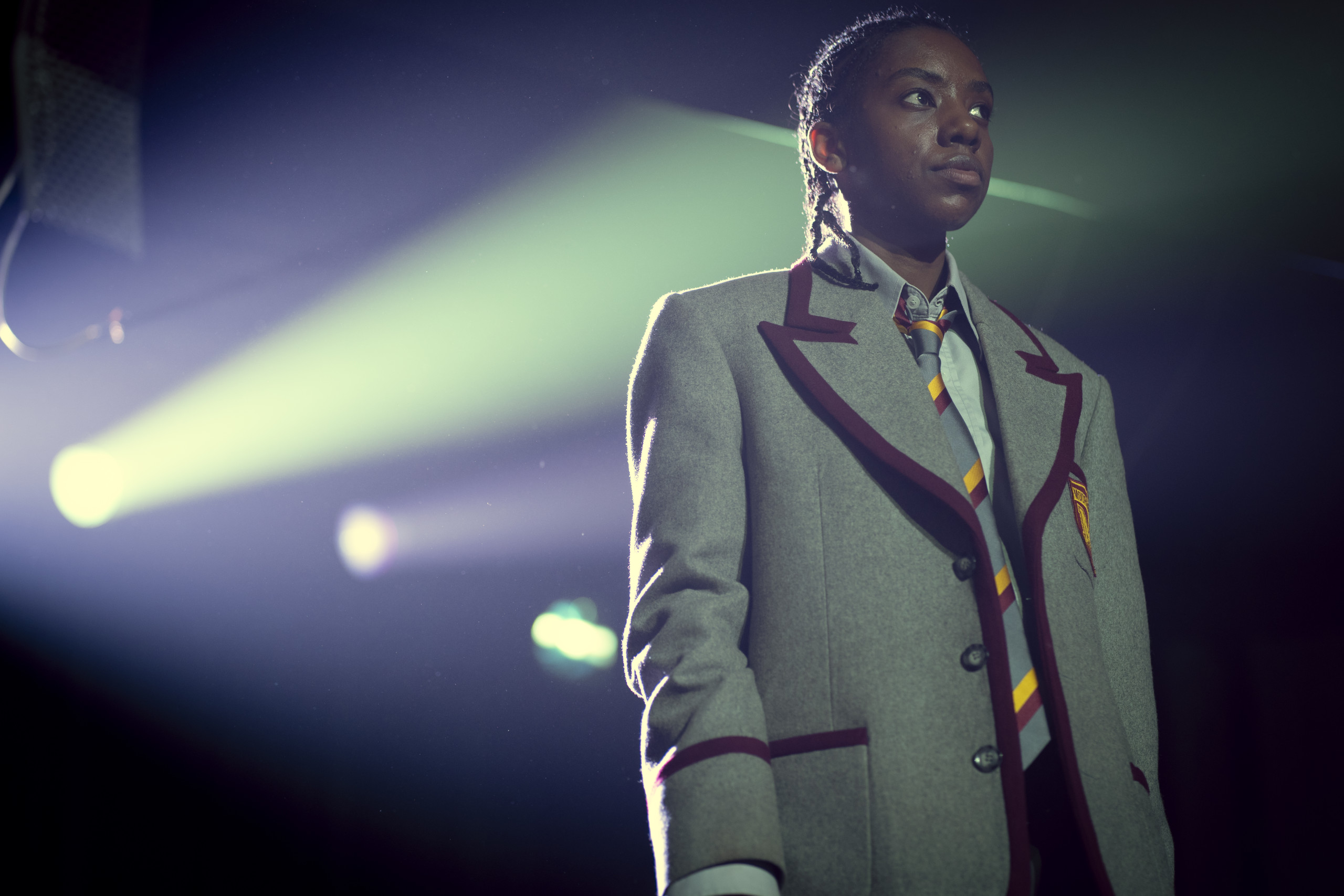Season 3 of Netflix’s popular original series “Sex Education” premiered with a bang (literally) on September 17. The first episode begins with a sex scene montage reminiscent of the show’s opening pilot scene, wherein viewers witnessed a graphic sex scene between main characters Aimee Gibbs and Adam Groff. This left some viewers in shock, but it also generated excitement over the show’s no-holds-barred approach to depicting sex.
The pilot told viewers that nothing about sex, sexuality and identity was off the table, and the first two seasons delivered in their discussions of topics like vaginismus, douching, contraception and more. “Sex Education” has also been noted for its depiction of serious topics like abortion, asexuality, intersectional LGBTQ identities, mental health and sexual assault.
Who Is Cal?
In Season 3, some of the show’s antagonistic characters, like Ruby Matthews, Adam Groff and former Headmaster Groff, continue their respective redemption arcs. According to some, these characters carried the season. But there were also plenty of new faces on screen, including Cal Bowman — a new Moordale student from Minneapolis played by Dua Saleh.
In real life, Saleh is a Minneapolis-based Sudanese American recording artist, songwriter and poet. “Sex Education” marks their breakout screen-acting role. Perhaps most importantly, Saleh is nonbinary, like Cal. Despite not having much acting experience, the “Sex Education” creators reached out to Saleh directly regarding the role.
In an interview with Autostraddle, they shared their experience on set, including their worries and how they were able to provide feedback on their character’s transness:
“I feel like they did pretty well for a show that hadn’t touched upon transness before — especially with the nonbinary consultants and with the questions they asked me prior to going in. But when they invited me to talk with them I called them in and was like trans characters and especially nonbinary characters don’t often have much depth to their transness. And Cal is in the main cast — they’re a prominent character — so there was a real opportunity.”
Bigotry In the School Setting
The viewers first meet Cal when they run into Jackson Marchetti in the hallway in the first episode of the season. However, Cal gets a proper introduction in Episode 2 when Jackson and Viv Odusanya are tasked with painting over a graffiti-covered “penis wall.” Cal, skateboard in hand, smoothly drops in on their debate over the coverup, saying, “Who’s to say what’s art and what isn’t?” When Jackson misgenders them, they easily and casually correct him, saying, “My pronouns are they/them.”
Cal and Jackson hit it off quickly and begin hanging out. In Episode 3, Cal introduces the former star swimmer to recreational drugs and tells him it’s okay not to have everything figured out. Later, in Episode 5, when the students visit France with their school, the two trip on shrooms together. They almost kiss and develop a romantic tension that evolves through the end of the season.
As the season progresses, the primary conflict grows as the main antagonist, authoritarian new headteacher Hope Haddon, tries to rebrand Moordale Secondary in the wake of its “sex school” scandals. Haddon does so by cracking down on individual expression. She implements a strict new dress code and backward, abstinence-only sex education classes.
Cal’s transness becomes salient when Haddon tries to bully them into wearing a skirt with their uniform. When Cal adamantly refuses, she bullies them into wearing a less baggy uniform despite the dysphoria it causes. The viewer sees them struggle with gender dysphoria when forced to try on the form-fitting uniform in a girls’ changing room, where some of the other students notice and laugh at their binder.
Cal tells Jackson how they and some other queer kids used to change in the old, abandoned toilet block where much of the first season took place. The block was a space of retreat and privacy for the students — at least, until Haddon had it demolished.
When Jackson, former head boy, offers to talk to Haddon on Cal’s behalf, they refuse, telling him, “Thanks, but I can fight my own battles.” And throughout the season, Cal does just that. Cal calmly but firmly stands their ground against anti-trans bullying from an authority figure. They do so not only for themselves but also for other nonbinary characters like Layla, who is introduced as a new side character struggling under Haddon’s regime.
In the final episode of Season 3, the audience sees Layla going through the painful process of binding with bandages in their room before school. They end up approaching Cal to ask about safer binding practices. In a touching scene, Cal lends Layla one of their binders, and the two are able to connect over the gender euphoria Layla finally feels. This scene not only celebrates trans-solidarity and gender-affirming practices; it also warns viewers — many of whom may be trans themselves — about the dangers of unsafe binding practices and chest compression.
Prioritizing Oneself When Queer
Meanwhile, Cal and Jackson are forced to confront the implications of Cal’s transness as their relationship evolves. For instance, Jackson calls Cal “beautiful” when they are making out and then immediately apologizes for using a gendered term. However, he isn’t quite able to recover the moment. This spurs Cal to tell Jackson that if he’s with them, he’ll be in a queer relationship. Here, the viewer witnesses an authentic and honest conversation necessary for the characters to have. Jackson, though well-intentioned, fumbles with Cal’s queer identity due to the barriers of his cis-het worldview.
Jackson then asks his lesbian mother if she always knew she was gay. Though he tells her, “This isn’t me telling you I’m gay,” this is still an important scene where Jackson, the perfectionist head boy, has a chance to truly self-reflect on his presumed cis-straight identity.
“There’s a language barrier — trans language, queer language. Having that disconnect be bridged, having authenticity and honesty set first — it’s an act of care for Cal and Jackson so they aren’t inauthentically living or inauthentically engaging with one another. And it adds more dimension to their romantic interest in one another,” Saleh told Autostraddle.
Thus, they decide to stay friends, despite still being attracted to each other. Jackson tells Cal he doesn’t think he’s queer and asks why they can’t still be together anyways. Cal responds, “Because I’m not a girl, and I’m worried you still see me as one.” Jackson says that he’s open and willing to learn, but Cal explains why they can’t divert energy into teaching all the time.
“Here’s the thing,” Cal says, “I’m still figuring out so much s— about myself. I can’t carry you too.” This parallels the breakup we see between Eric Effiong and Adam. It shows how some queer couples, despite still caring for each other deeply, may not work out due to being in different places in their personal journeys.
Eric claims, “I’ve worked really hard to find myself, and I’m beginning to lose who I am […] It’s not your fault; we’re just going in different directions.” Cal makes the same choice to prioritize queer self-acceptance and growth over a relationship. This is important representation for queer folks who must often make these difficult calls. The show’s queer characters show exceptional maturity in their ability to uplift those around them when they can but ultimately prioritizing their own needs.
Positive Representation Is Necessary
It is also refreshing to see so many of the show’s dark-skinned Black characters engaging with queerness and transness in a healthy, nuanced way. With Black trans women facing the greatest threat of violence at the intersection of two vulnerable identities, and the racism (or “secondary marginalization”) still prevalent in the LGBTQ+ community, it is important that shows like “Sex Education” represent such intersectionality in its characters.
Overall, the show does a good job in its positive representation. Its audience is able to learn from and fall in love with characters like Cal as they see models of people unlearning biases and assumptions.
In the penultimate episode, the students stage a definitive public rebellion against Haddon’s outdated principles. During a public press conference with prospective parents present, the student body — galvanized by Jackson, Viv and Cal — hijack the presentation and play a “vulgar” sex-positive video, proudly embracing their “sex school” label.
The choir gets on stage to perform a cover of the self-proclaimed school anthem, “F— the Pain Away” by Canadian singer Peaches. The scene climaxes when Cal, who had been locked in a room by Haddon for their continued refusal to wear a skirt, escapes through the air ducts and falls through the auditorium ceiling. They enter just in time to stand up in front of everyone and give Haddon two big, beautiful middle fingers, perfectly summing up the audience’s feelings.

















